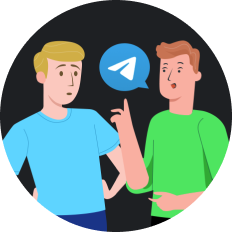How to Unblock Websites on a School Computer
Is accessing blocked websites at school a violation of educational policies, or is it sometimes a necessary workaround for legitimate academic research? This question sits at the intersection of institutional control and student autonomy, creating a gray area that many students navigate daily.
On one hand, school administrators implement website restrictions to create a safe learning environment, prevent distractions, and comply with educational regulations. Their perspective is clear: these barriers exist to protect students and maintain focus on approved educational content.
On the other hand, students often argue that these restrictions can be overly broad, blocking legitimate resources needed for research projects, limiting access to educational tools, or preventing them from accessing important information. In this view, knowing how to bypass these restrictions becomes a practical skill rather than an act of rebellion.
As we explore various methods to unblock websites on school computers in 2025, it's worth considering both perspectives and the responsibility that comes with this knowledge.
Understanding Website Restrictions in Schools
Before diving into solutions, it's important to understand why schools block websites in the first place. Educational institutions typically restrict access to:
- Social media platforms that might distract students
- Entertainment sites like gaming or streaming services
- Websites with inappropriate content
- Sites that might pose security risks to the school network
These restrictions are implemented through network-level blocks, firewall settings, and administrative controls on school-issued devices.
Methods to Unblock Websites on School Computers
1. Using a VPN (Virtual Private Network)
A VPN remains the most effective method for bypassing school internet restrictions in 2025. VPNs work by encrypting your internet connection and routing it through servers in different locations, effectively masking your browsing activity.
Why SafeShell VPN Stands Out for Students
While many VPN options exist, SafeShell VPN has emerged as a particularly effective solution for students needing to access blocked educational resources. With its lightning-fast speeds and user-friendly interface, it offers several advantages:
- Browser Extension Option : When you can't install software on school computers, SafeShell VPN's browser extension provides a convenient workaround.
- Exceptional Speed Performance : Unlike many VPNs that slow your connection, SafeShell VPN maintains high speeds—crucial when you're researching against a deadline.
- Undetectable Browsing : SafeShell uses advanced technology to avoid detection by school network monitoring systems.
- Multi-device Support : Works across different operating systems and devices you might use at school.
To use SafeShell VPN on a school computer:
- Install the SafeShell VPN browser extension if software installation is restricted
- Connect to a server location of your choice
- Browse freely with your connection now encrypted and private
2. Web Proxy Servers
If installing a VPN isn't possible, web proxies offer a browser-based alternative:
- Visit a web proxy site like HideMyAss or ProxySite
- Enter the URL of the blocked website you want to visit
- Browse through the proxy's interface
Web proxies are convenient but offer less security and reliability compared to dedicated VPNs like SafeShell.
3. Using Google Translate as a Proxy
This clever workaround uses Google Translate's preview feature:
- Go to Google Translate
- Enter the URL of the blocked website in the translation field
- Choose any language pair (it doesn't matter which)
- Click on the website link that appears in the translation result
While this method works for basic text content, it often breaks site functionality and images.
4. Accessing Sites via IP Address Instead of URL
Sometimes school filters block domain names but not their corresponding IP addresses:
- Open Command Prompt (on Windows) or Terminal (on Mac)
- Type 'ping [website.com]' and press Enter
- Note the IP address that appears
- Enter that IP address directly in your browser
This method has become less effective in 2025 as schools have improved their filtering systems, but it's still worth trying.
5. Using URL Shorteners
URL shorteners can sometimes bypass blocks that target specific URLs:
- Visit a URL shortening service like Bitly or TinyURL
- Paste the blocked website's URL
- Use the shortened link instead
Success with this method varies widely depending on how sophisticated the school's filtering system is.
6. The Tor Browser
The Tor Browser routes your connection through multiple servers, making it difficult to track:
- If possible, download and install the Tor Browser
- Launch it like any other browser
- Access previously blocked websites
Be aware that Tor connections are typically quite slow and many schools now block Tor access as well.
Comparison: VPN vs. Other Methods
| Method | Ease of Use | Speed | Security | Reliability | Detection Risk |
|---|---|---|---|---|---|
| SafeShell VPN | ★★★★☆ | ★★★★★ | ★★★★★ | ★★★★☆ | Low |
| Web Proxies | ★★★★★ | ★★☆☆☆ | ★★☆☆☆ | ★★☆☆☆ | Medium |
| Google Translate | ★★★★☆ | ★★☆☆☆ | ★☆☆☆☆ | ★★☆☆☆ | Medium |
| IP Address | ★★☆☆☆ | ★★★★☆ | ★☆☆☆☆ | ★☆☆☆☆ | High |
| URL Shorteners | ★★★★★ | ★★★★☆ | ★☆☆☆☆ | ★★☆☆☆ | Medium |
| Tor Browser | ★★☆☆☆ | ★☆☆☆☆ | ★★★★★ | ★★★☆☆ | Medium |
As the table shows, SafeShell VPN provides the best balance of speed, security, and reliability compared to other methods.
When Using a Personal Device at School
If you're using your own laptop, tablet, or smartphone on the school network, you have more options:
- Install a full VPN application : SafeShell VPN's dedicated apps provide the most comprehensive protection and unblocking capabilities.
- Use mobile data instead of school Wi-Fi : This bypasses school network restrictions entirely, though it uses your data plan.
- Create a mobile hotspot : If one device has unrestricted access, it can share that connection with other devices.
Ethical Considerations and Responsible Use
Let's be real for a moment—with great power comes great responsibility. While knowing how to unblock websites can be useful, it's important to consider:
- School policies exist for legitimate reasons, including student safety
- Using these methods to access inappropriate content could have serious consequences
- Bandwidth usage affects everyone on the network
The most defensible use of these techniques is accessing legitimate educational resources that have been inadvertently blocked. If you're just trying to play games or scroll social media during class... well, that's between you and your grades!
The Bottom Line: Balance Freedom with Responsibility
So, returning to our opening question: is accessing blocked websites at school a violation or a necessity? The answer, like most things in life, depends on context and intent.
Schools have legitimate reasons for implementing restrictions, but these systems are imperfect and sometimes block valuable resources. Having the tools to access information responsibly—particularly when needed for legitimate educational purposes—can be valuable in today's digital learning environment.
SafeShell VPN offers a balanced solution that provides access while maintaining security and privacy. Its exceptional speed performance means you won't waste valuable class time waiting for pages to load, and its undetectable browsing features help avoid unnecessary confrontations over network policy.
Whatever method you choose, remember that digital citizenship includes using these tools responsibly. The goal should be expanding your educational horizons, not simply circumventing rules for the sake of it.


